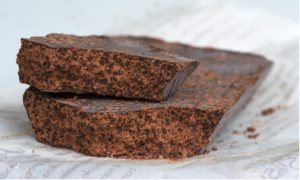Modica chocolate production technique
Modica chocolate requires a cold processing that makes it grainy and crumbly, characterized by the presence of granulated sugar in crystals.
The cocoa mass is obtained from roasted and ground seeds with the cocoa butter contained in it, it is heated to make it fluid and mixed with granulated or cane sugar and spices. The mixture is processed by always maintaining a “cold” temperature that does not exceed 40 ° C in order to keep the sugar crystals intact.
In traditional processing, the mass is placed on a lava stone level ground (the valata ra ciucculatta). Under the shelf there is a container for the coal, a necessary tool to gradually heat the work surface. The mixture is then amalgamated with a stone rolling pestle (pistuni), of different weight and thickness, up to the refining phase, which took the name of stricata.
The mixture is poured into special rectangular tin molds (lanni), which are beaten on a surface in order to eliminate any air bubbles and make the product compact and finally left to rest for at least 24 hours in a cool place. There are standard measures of the Modica chocolate bar.
The traditional tastes of the chocolate bars are cinnamon, vanilla or chilli.
The processing of chocolate was introduced in the County of Modica in the sixteenth century, during the Spanish domination. In turn, the Spanish would have learned it from the Aztecs, on the occasion of the conquest campaigns in Mexico.
In the County of Modica sugar and spices, vanilla and cinnamon were added to the original Aztec recipe, obtaining a product that in addition to having nutritional properties was also used as a medicine.
This chocolate never passed to the industrial phase and remained unchanged over the centuries. Even today, chocolate is produced with the same methodology and combining the same ingredients.
In addition to Modica, traces of this traditional type of processing can still be found in Spain (el chocolate a la piedra), as well as in the indigenous communities of Mexico and Guatemala.


